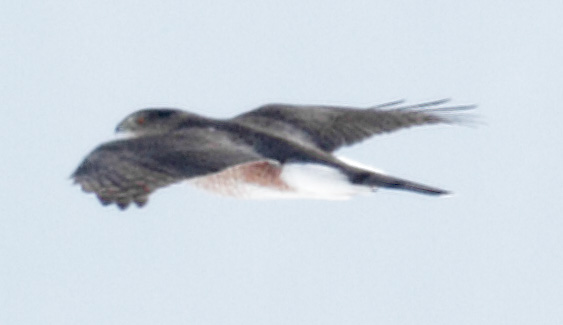
Cooper's Hawk
We had about 16 inches of snow last Wednesday here on the east side of the Blue Ridge, and there was about 20 inches of snow on the west side in the Shenandoah Valley. The temperature warmed a bit, but it wasn't until the past day or so that the snow was melting along the road shoulders, and in heavy traffic areas such as around barns where cows and other farm animals had moved about.
The birds must have been very hungry with all the area farm fields under heavy snow cover. Walt Childs and I decided to drive up U.S. route 340 from Waynesboro to Elkton to see what might be there. This was the last day of the Great Backyard Bird Count, so we tried our best to keep track of numbers as well as species that we saw and were able to identify.
It was still cold with temperatures in the mid-20s when we started north from Waynesboro. We did see one flock of American Pipits fly across route 340 in front of us, but quickly out of sight. There were a good number of hawks out looking for a meal. The first one we saw was an adult Cooper's Hawk. We saw a few birds in the fields, and the bright yellow breast of an Eastern Meadowlark stood out against the snow.

Cooper's Hawk
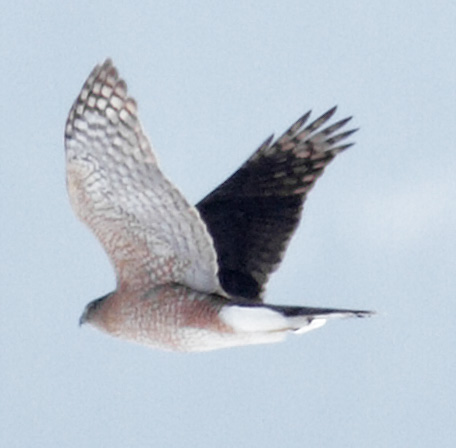
Cooper's Hawk
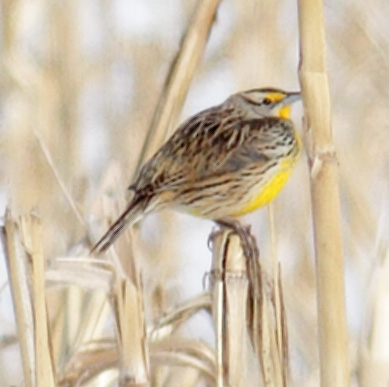
Eastern Meadowlark
We stopped at the Cargill sign south of the Merck plant near Elkton. Last winter, there were American Pipits, Horned Larks, and a rare Lapland Longspur there, but all we saw there was snow. We drove a little farther north, took a left just before the Merck plant, and then turned south along the South Fork Shenandoah River. In the river we saw three Greater Scaup, one Bufflehead, some Mallards, and a small flock of Green-winged Teals. There were typical woodland birds in the trees along the river.
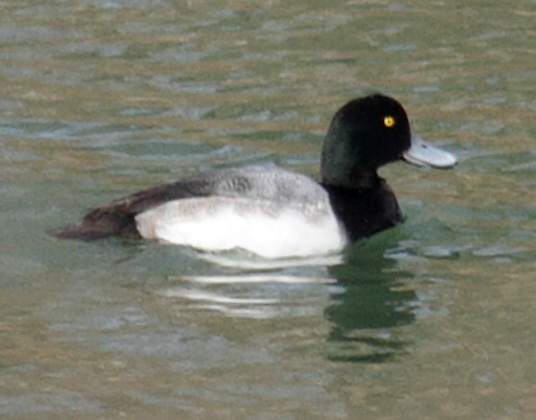
Greater Scaup
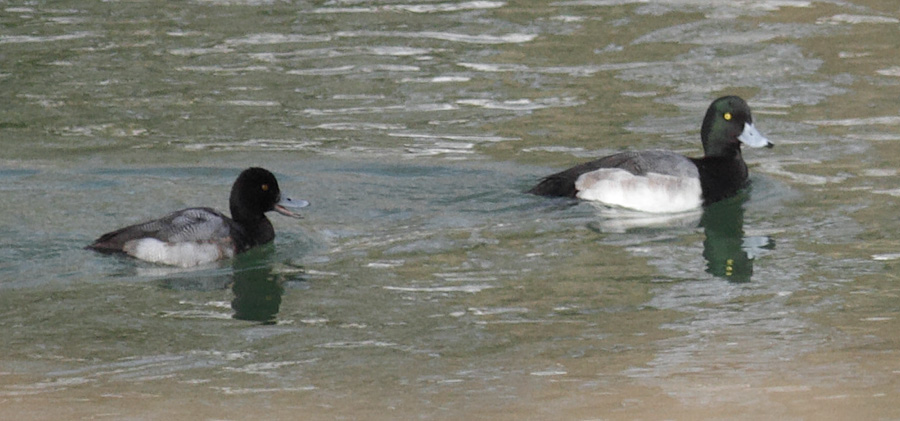
Greater Scaup
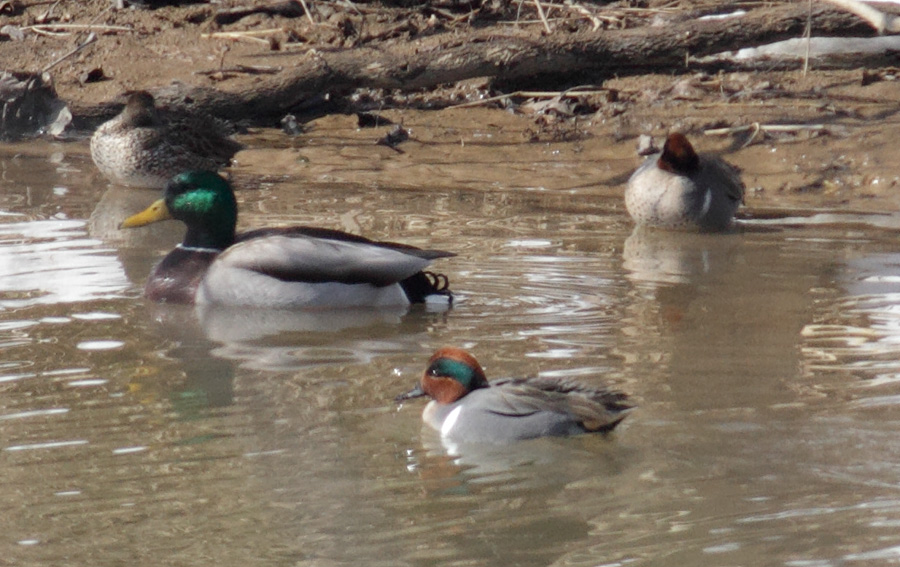
Mallard and Green-winged Teals
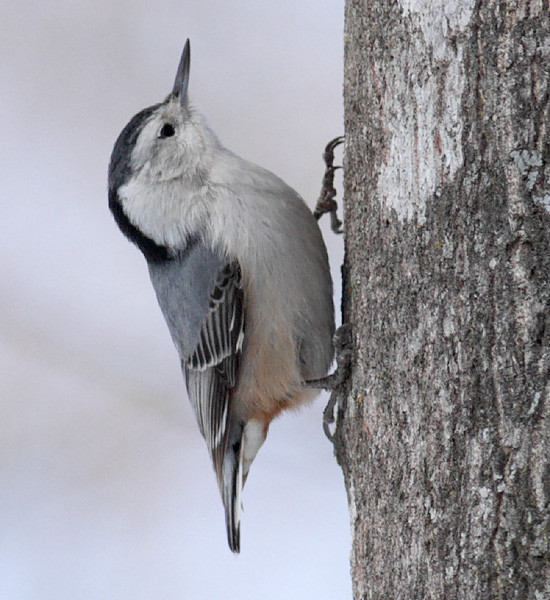
White-breasted Nuthatch
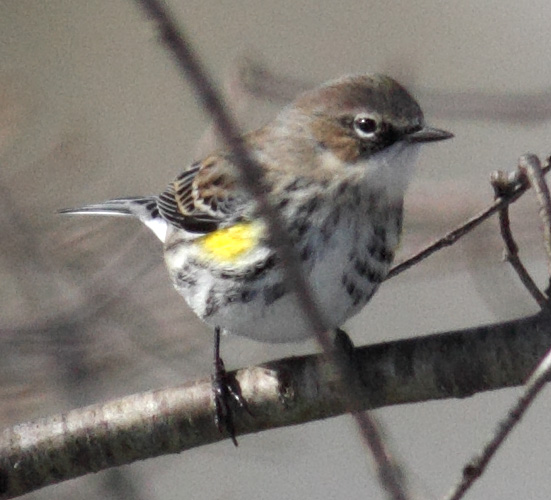
Yellow-rumped Warbler
A juvenile Red-shouldered Hawk flew across the road, and then we saw a Red-tailed Hawk.
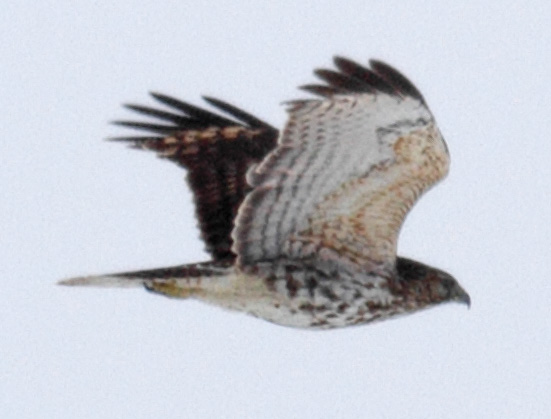
Juvenile Red-shouldered Hawk
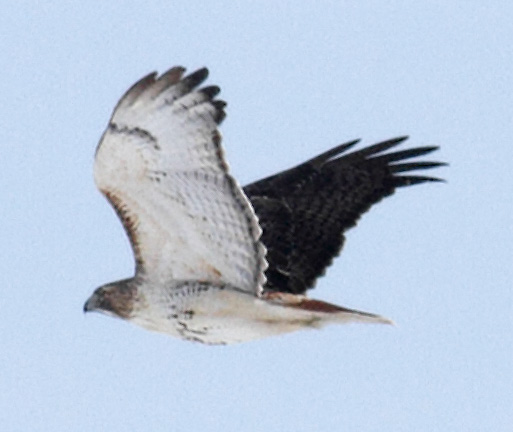
Red-tailed Hawk
The Red-tailed Hawk flew to the south, and a short distance down the road we re-located it sitting in a tree with another Red-tailed Hawk. The second hawk then turned away from us, and took off. I presume that they were taking turns looking for food.
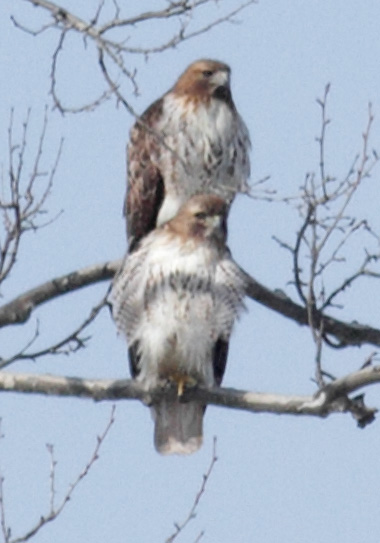
Red-tailed Hawks
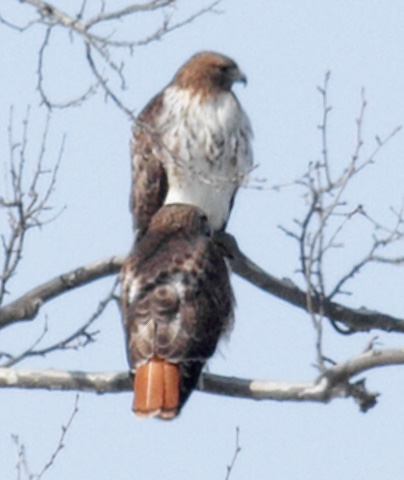
Red-tailed Hawks
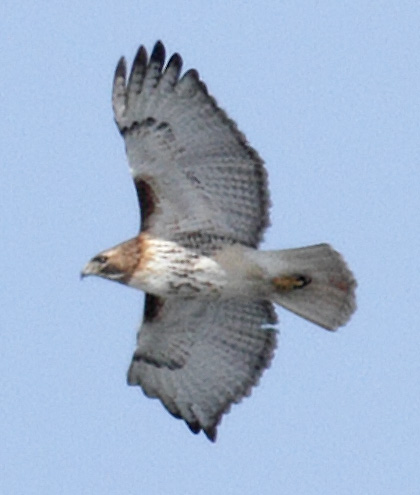
Red-tailed Hawk
We circled back to route 340, and then north again - this time we saw two Horned Larks near the Cargill sign. We decided to get a quick lunch in Elkton and then head back toward Waynesboro. By the time we finished eating, the temperature had warmed up to the low to mid 30s, and the birds seemed to be getting more active. We stopped at the Cargill sign again, and I crossed the road and railroad tracks to look in the fields on that side. I saw a small flock of Horned Larks and took a short sequence of photos.
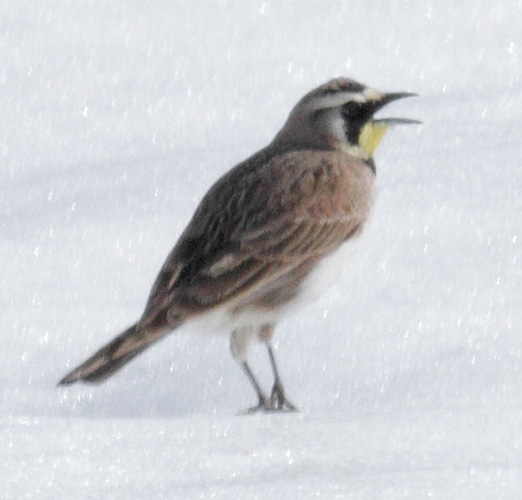
Horned Lark
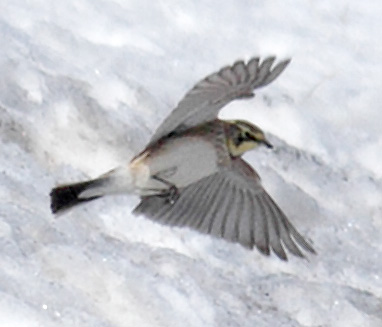
Horned Lark
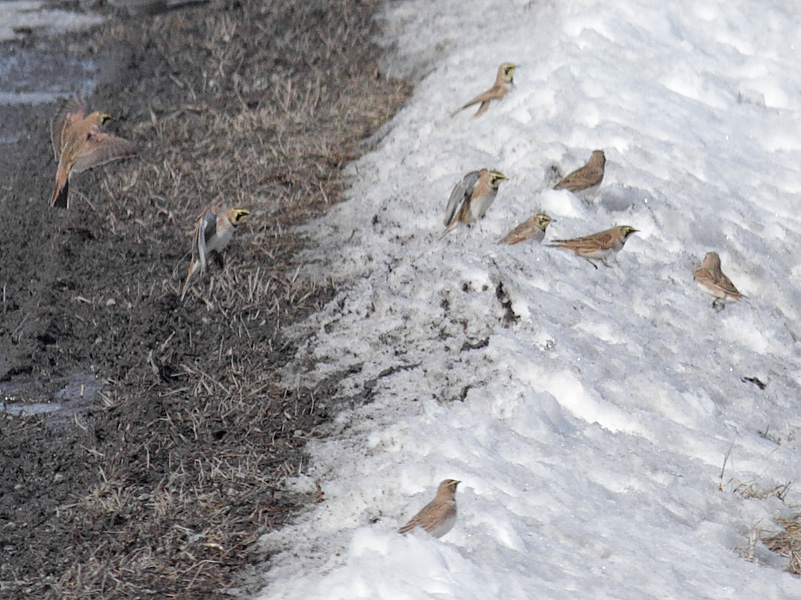
Horned Larks
It wasn't until I got home and started processing the photos that I saw that there was a rare Lapland Longspur in with the flock.
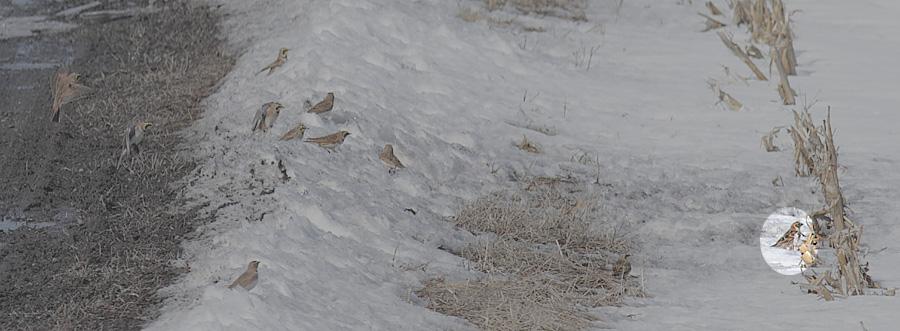
Lapland Longspur
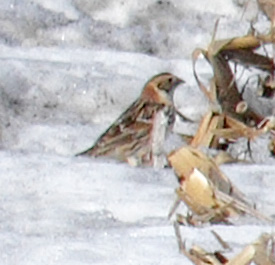
Lapland Longspur
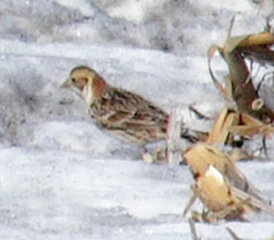
Lapland Longspur
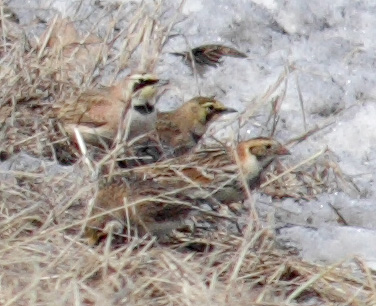
Lapland Longspur and Horned Larks
We saw a few more birds, mostly Red-tailed Hawks, as we headed south, and decided to make a short stop at the Shenandoah Valley Regional Airport. On the drive to the airport along the runways, we saw a huge flock of Mourning Doves on the power lines - I stopped counting at 100, and Walt counted 150. And then we saw more of them perched on the rails of a barn below the power lines, and even more in the wet field where cows had melted the snow. We estimated that there were at least 200 Mourning Doves there, along with Rock Pigeons and Starlings. And then I saw some American Pipits on the muddy drive up to the barn, and then some Horned Larks - one of them looked different - it was a another Lapland Longspur, although at the time we thought that it was our first one for the trip.
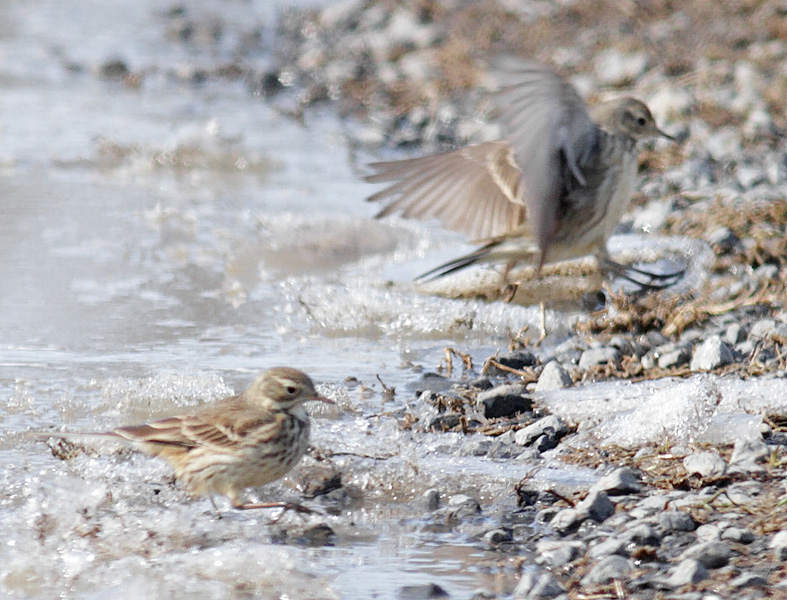
American Pipits
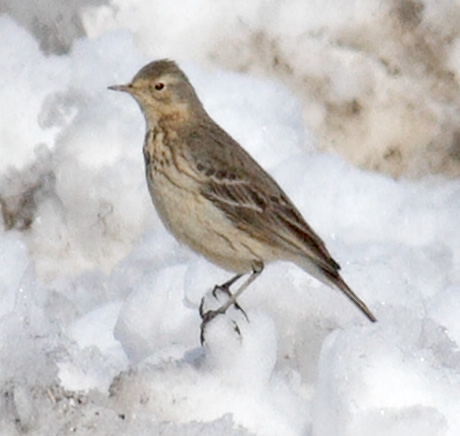
American Pipit
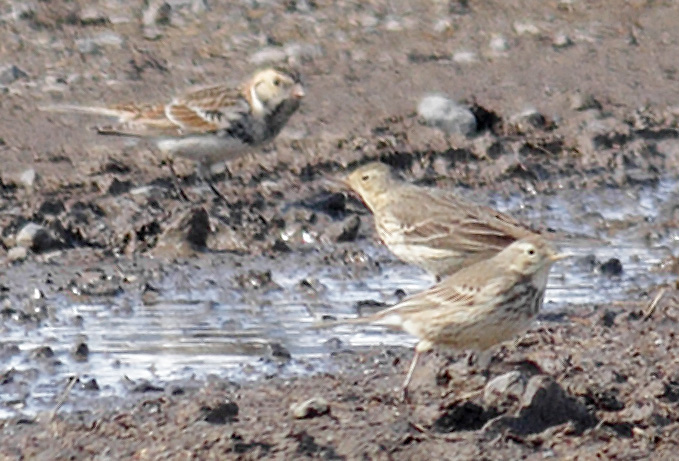
Lapland Longspur and American Pipits
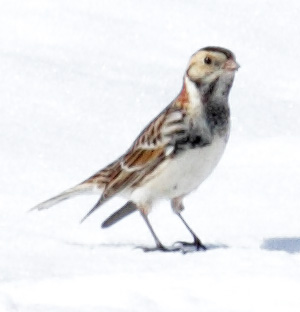
Lapland Longspur
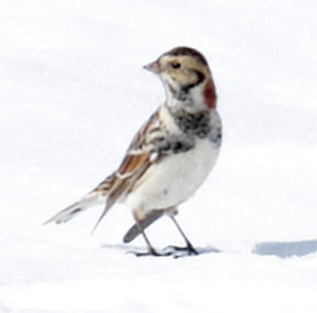
Lapland Longspur
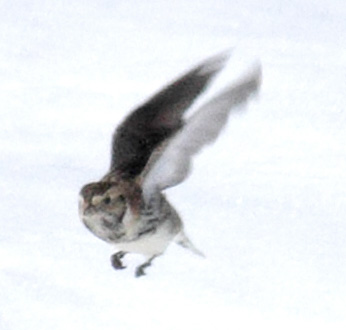
Lapland Longspur
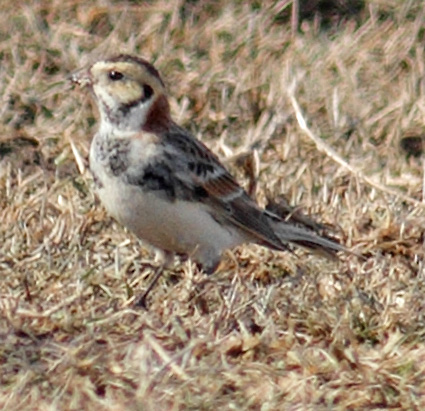
Lapland Longspur
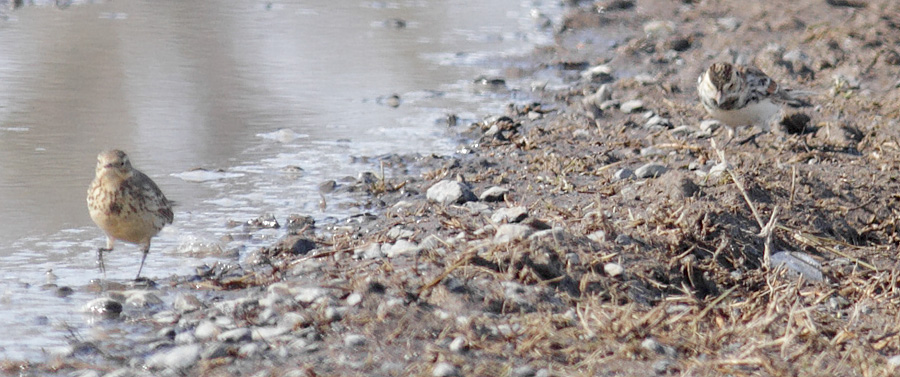
Lapland Longspur and American Pipit
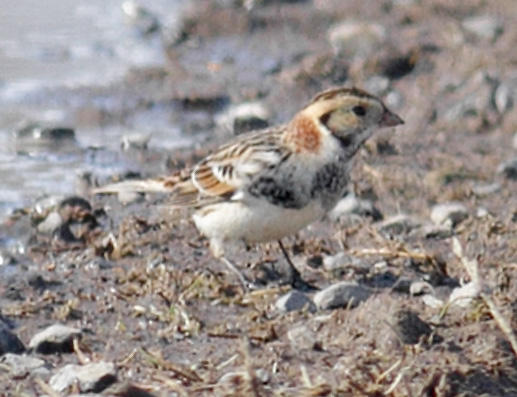
Lapland Longspur
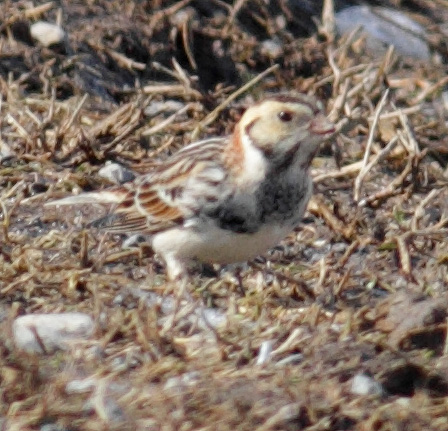
Lapland Longspur
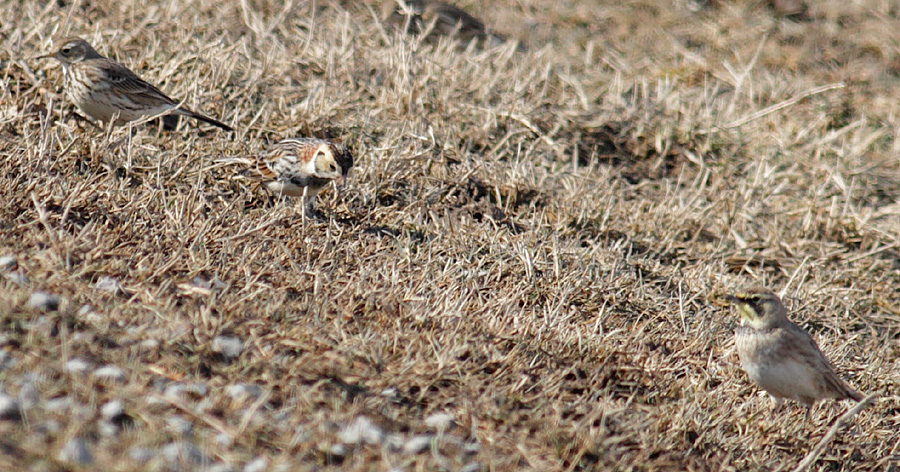
Three Amigos: American Pipit, Lapland Longspur, and Horned Lark
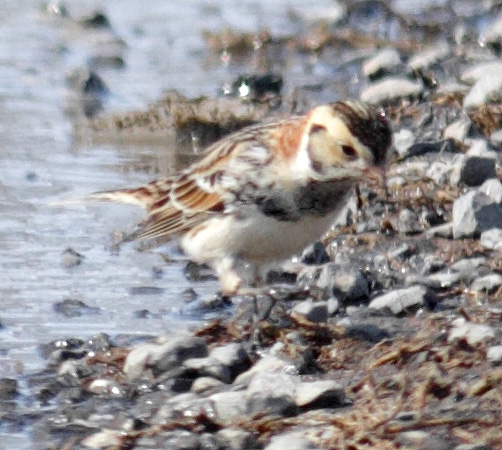
Lapland Longspur
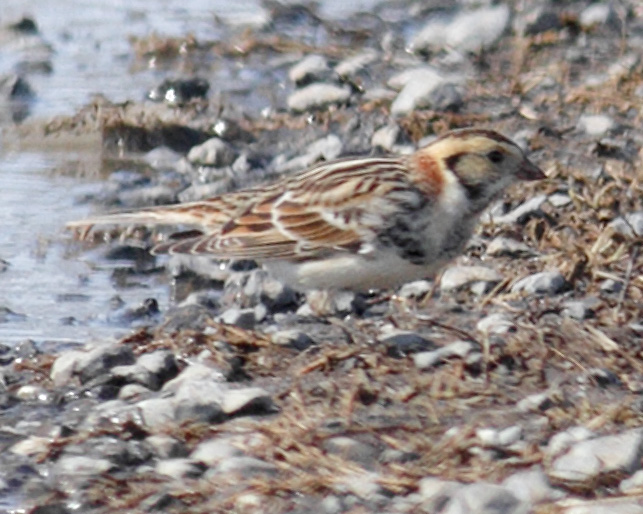
Lapland Longspur
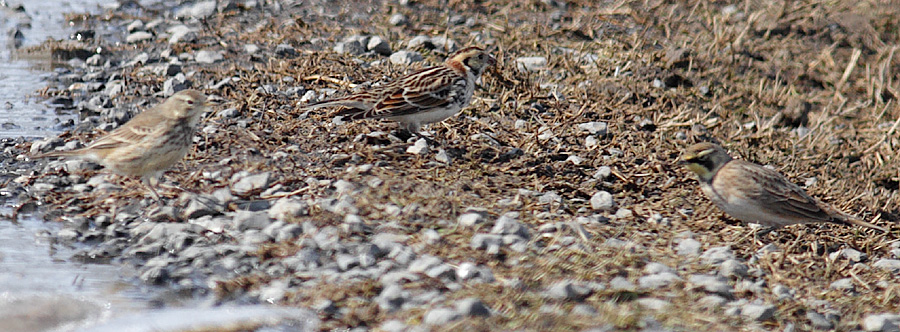
Three Amigos: American Pipit, Lapland Longspur, and Horned Lark
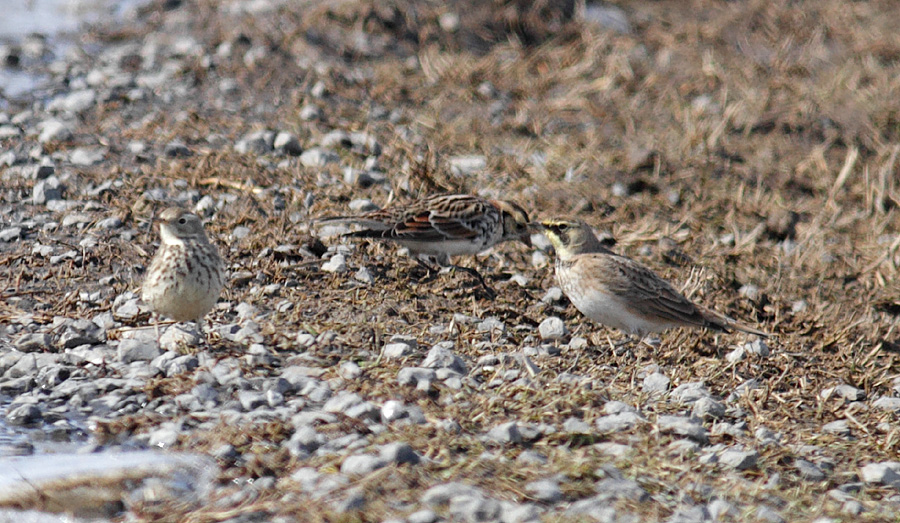
Three Amigos: American Pipit, Lapland Longspur, and Horned Lark
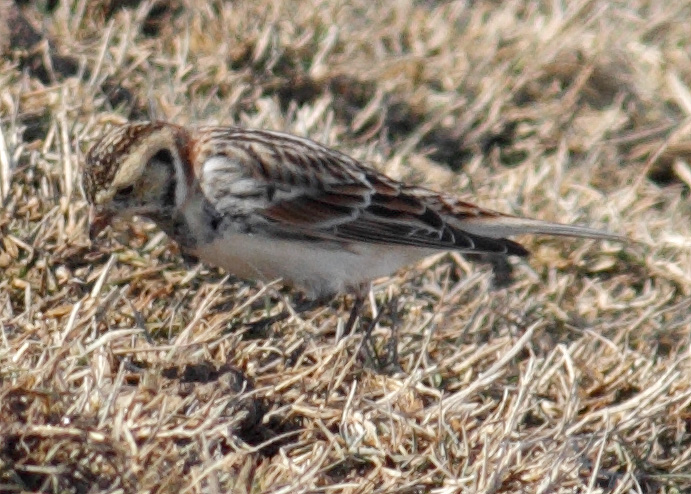
Lapland Longspur
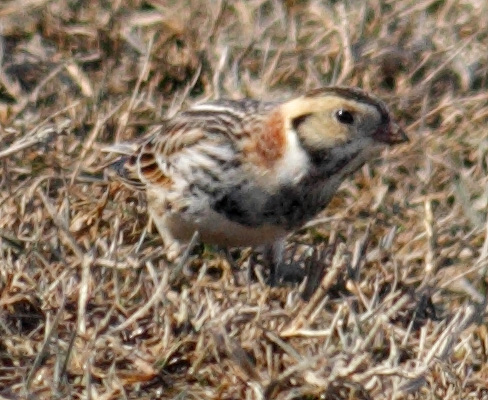
Lapland Longspur
Seeing a Lapland Longspur, an American Pipit, and a Horned Lark together really got us pumped, and we were really excited to have been out birding this day. But we weren't done yet. We drove into the airport parking lot, and along the edge of the asphalt were a dozen White-crowned Sparrows that were much more interested in eating than our being close to them.
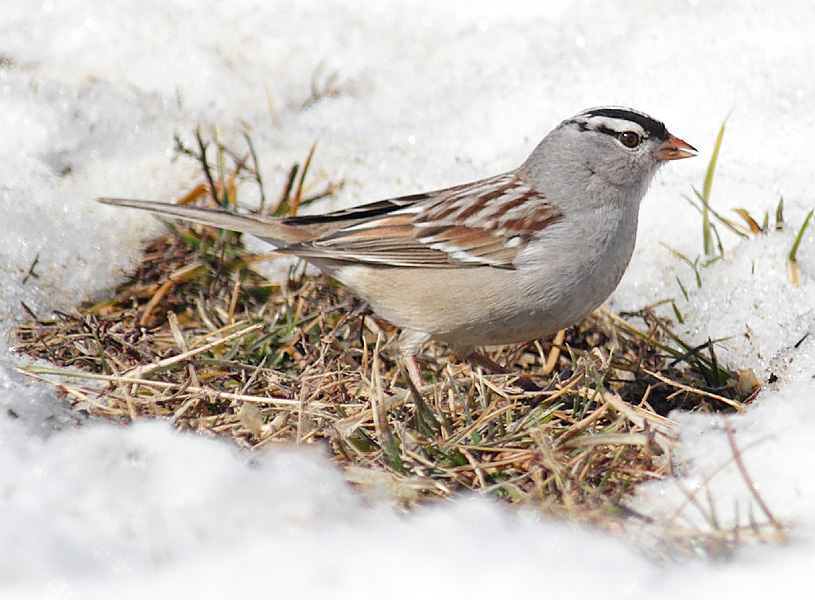
White-crowned Sparrow
On the way home, we saw a pair of Savannah Sparrows and more Red-shouldered Hawks (3 for the day), Red-tailed Hawks (11 for the day), and American Kestrels (3 for the day).
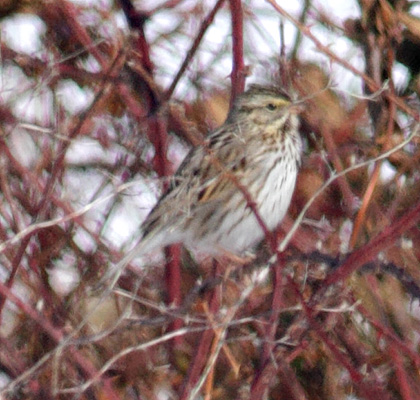
Savannah Sparrow
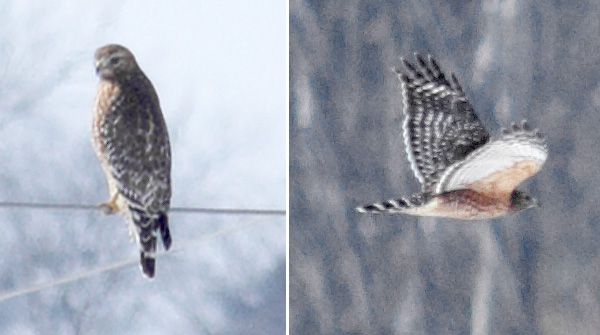
Red-shouldered Hawk
We made a short detour along Strickley Road where we saw more Horned Larks.
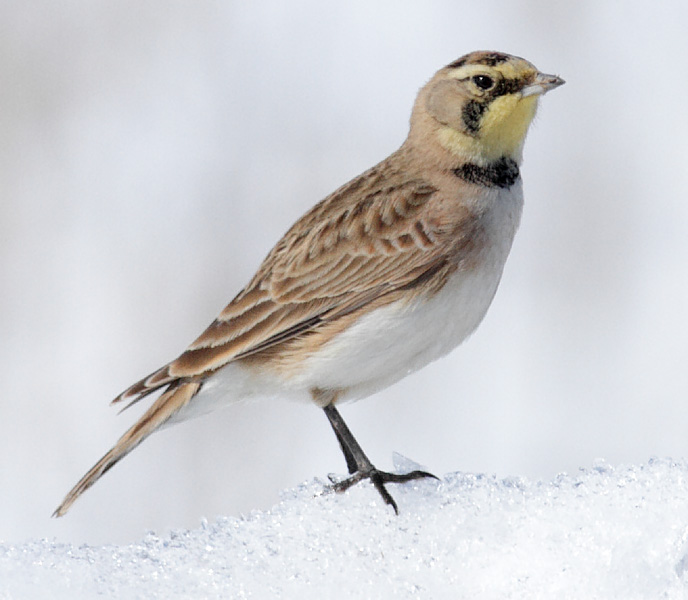
Horned Lark
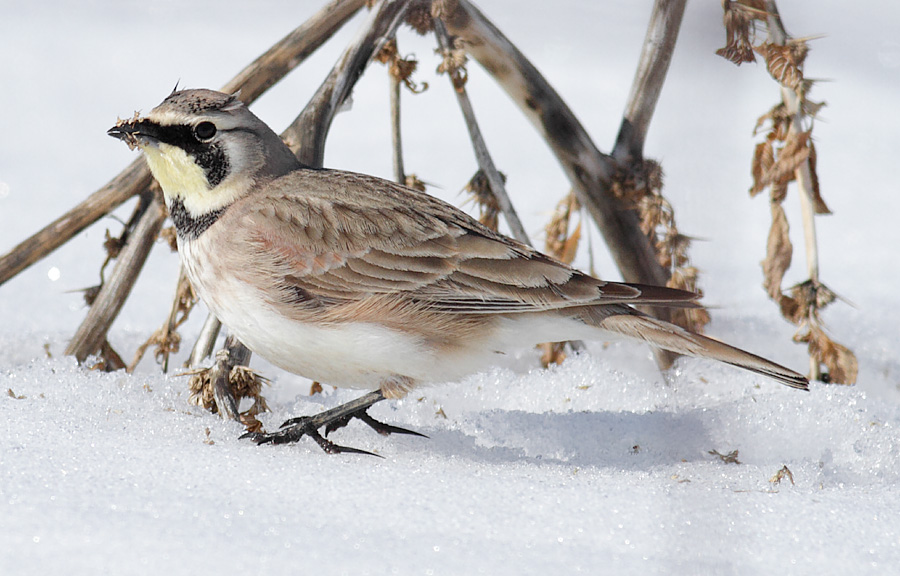
Horned Lark
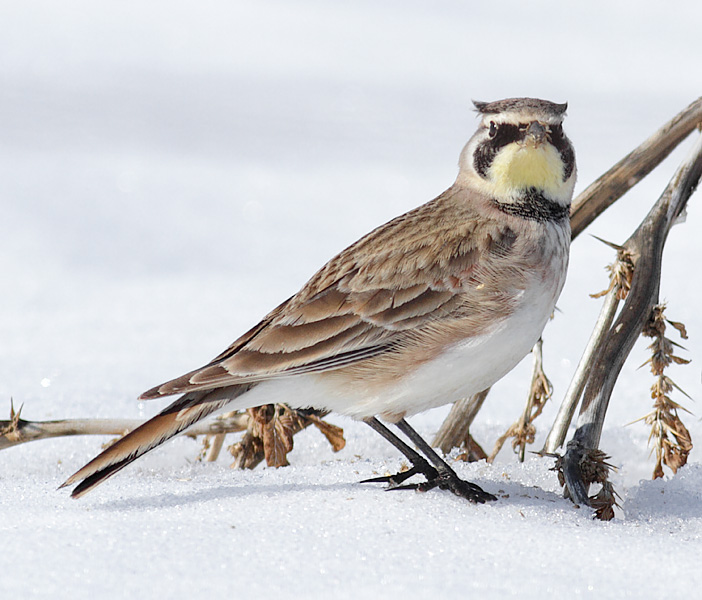
Horned Lark
We ended the trip seeing a flock of about 20 Eastern Meadowlarks in the snow.
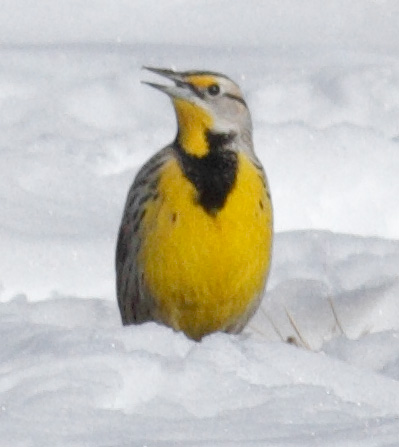
Eastern Meadowlark
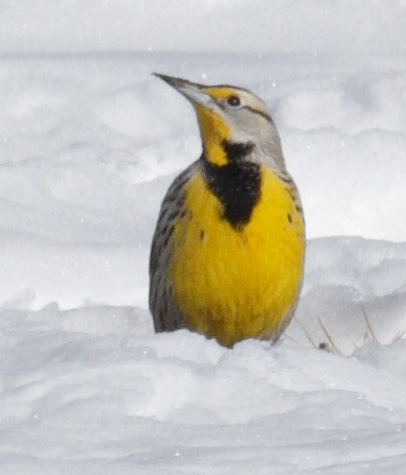
Eastern Meadowlark
Our GBBC list for the day:
Feb 17, 2014 10:00 AM - 3:00 PM
Protocol: Traveling
65.0 mile(s)
Comments: US route 340 from Waynesboro, VA to Elkton, VA and return with a few short side trips from this highway
34 species
Canada Goose 12
Mallard 4
Green-winged Teal 8
Greater Scaup 3
Bufflehead 1
Turkey Vulture 4
Cooper's Hawk 1
Red-shouldered Hawk 3
Red-tailed Hawk 11
Rock Pigeon (Feral Pigeon) 30
Mourning Dove 250
Red-bellied Woodpecker 1
Downy Woodpecker 1
American Kestrel 3
American Crow 24
Horned Lark 125
Carolina Chickadee 4
Tufted Titmouse 3
White-breasted Nuthatch 2
Golden-crowned Kinglet 1
Eastern Bluebird 12
American Robin 1
Northern Mockingbird 12
European Starling 120
American Pipit 32
Lapland Longspur 2
Yellow-rumped Warbler 2
Savannah Sparrow 2
Song Sparrow 12
White-throated Sparrow 3
White-crowned Sparrow 12
Dark-eyed Junco 50
Northern Cardinal 8
Eastern Meadowlark 20